Research Area D - Publications 2015
15-Dec-2015
Nucl. Acids Res., doi: 10.1093/nar/gkv1372

Eukaryotic chromatin is a complex yet dynamic structure, which is regulated in part by the assembly and disassembly of nucleosomes. Key to this process is a group of proteins termed histone chaperones that guide the thermodynamic assembly of nucleosomes by interacting with soluble histones. Here we investigate the interaction between the histone chaperone sNASP ...
11-Dec-2015
Nanoscale, 8, 938-948, DOI: 10.1039/C5NR06122A
Nanoscale, online article
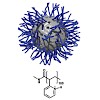
Multifunctional mesoporous silica nanoparticles (MSN) have attracted substantial attention with regard to their high potential for targeted drug delivery. For future clinical applications it is crucial to address safety concerns and understand the potential immunotoxicity of these nanoparticles. In this study, we assess the biocompatibility and functionality of ...
26-Nov-2015
Angew. Chem. Int. Ed., Volume 55, Issue 3, Pages 1187–1191, DOI: 10.1002/anie.201508052

Vibrio is a model organism for the study of quorum sensing (QS) signaling and is used to identify QS-interfering drugs. Naturally occurring fimbrolides are important tool compounds known to affect QS in various organisms; however, their cellular targets have so far remained elusive. Here we identify the irreversible fimbrolide targets in the proteome of living V. ...
19-Nov-2015
Scientific Reports, 5:16952, DOI: 10.1038/srep16952

The major immediate-early promoter and enhancer of the human cytomegalovirus (hCMV-MIE) is one of the most potent DNA elements driving recombinant gene expression in mammalian cells. Therefore, it is widely employed not only in research but also in large-scale industrial applications, e.g. for the production of therapeutic antibodies in Chinese hamster ovary ...
13-Nov-2015
Transcription, Volume 6, Issue 5, 91-101, DOI: 10.1080/21541264.2015.1114983

Dynamic modification of heptad-repeats with the consensus sequence Tyr1-Ser2-Pro3-Thr4-Ser5-Pro6-Ser7 of RNA polymerase II (RNAPII) C-terminal domain (CTD) regulates transcription-coupled processes. Mass spectrometry analysis revealed that K7-residues in non-consensus repeats of human RNAPII are modified by acetylation, or mono-, di-, and tri-methylation. K7ac, ...
05-Nov-2015
Molecular Microbiology, DOI: 10.1111/mmi.13233
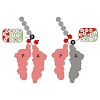
Synthesis of polyproline proteins leads to translation arrest. To overcome this ribosome stalling effect, bacteria depend on a specialized translation elongation factor P (EF-P), being orthologous and functionally identical to eukaryotic/archaeal elongation factor e/aIF-5A (recently renamed ‘EF5’). EF-P binds to the stalled ribosome between the peptidyl-tRNA ...
05-Nov-2015
Molecular Cell, Volume 60, Issue 3, p487–499, http://dx.doi.org/10.1016/j.molcel.2015.10.011
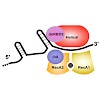
The MLE helicase remodels the roX lncRNAs, enabling the lncRNA-mediated assembly of the Drosophila dosage compensation complex. We identified a stable MLE core comprising the DExH helicase module and two auxiliary domains: a dsRBD and an OB-like fold. MLEcore is an unusual DExH helicase that can unwind blunt-ended RNA duplexes and has specificity for uridine ...
29-Oct-2015
OncoImmunology, 5:3, e1105428, DOI: 10.1080/2162402X.2015.1105428
OncoImmunology, online article

T cell infiltration at the tumor site has been identified as a major predictor for the efficacy of adoptive T cell therapy. The chemokine C-C motif ligand 22 (CCL22) is highly expressed by immune cells in murine and human pancreatic cancer. Expression of its corresponding receptor, C-C chemokine receptor type 4 (CCR4), is restricted to regulatory T cells (Treg). ...
25-Sep-2015
Angewandte Chemie International Edition, DOI: 10.1002/anie.201505456

A novel chemoenzymatic approach for simple and fast site-specific protein labeling is reported. Recombinant tubulin tyrosine ligase (TTL) was repurposed to attach various unnatural tyrosine derivatives as small bioorthogonal handles to proteins containing a short tubulin-derived recognition sequence (Tub-tag). This novel strategy enables a broad range of ...
03-Sep-2015
Molecular Cell, Volume 59, Issue 5, p713–715, DOI: http://dx.doi.org/10.1016/j.molcel.2015.08.010
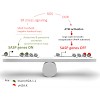
Oncogene activation is usually not enough to induce cancer, but causes cells to arrest proliferation, alter chromatin structure, and increase protein secretion. In this issue of Molecular Cell, Chen et al. (2015) implicate the histone variant macroH2A.1 in the regulation of senescence.
01-Sep-2015
Cell Cycle, Volume 14 Issue 17, 2810--2820; http://dx.doi.org/10.1080/15384101.2015.1068482
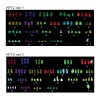
Up to 80% of human cancers, in particular solid tumors, contain cells with abnormal chromosomal numbers, or aneuploidy, which is often linked with marked chromosomal instability. Whereas in some tumors the aneuploidy occurs by missegregation of one or a few chromosomes, aneuploidy can also arise during proliferation of inherently unstable tetraploid cells ...
10-Aug-2015
The European Physical Journal E, online article

Chromatin remodeling complexes utilize the energy of ATP hydrolysis to change the packing state of chromatin, e.g. by catalysing the sliding of nucleosomes along DNA. Here we present simple models to describe experimental data of changes in DNA accessibility along a synthetic, repetitive array of nucleosomes during remodeling by the ACF enzyme or its isolated ...
27-Jun-2015
Nucl. Acids Res., online article
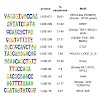
Chromatin immunoprecipitation (ChIP) is widely used to identify chromosomal binding sites. Chromatin proteins are cross-linked to their target sequences in living cells. The purified chromatin is sheared and the relevant protein is enriched by immunoprecipitation with specific antibodies. The co-purifying genomic DNA is then determined by massive parallel ...
12-Jun-2015
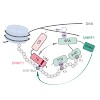
DNMT1 is recruited by PCNA and UHRF1 to maintain DNA methylation after replication. UHRF1 recognizes hemimethylated DNA substrates via the SRA domain, but also repressive H3K9me3 histone marks with its TTD. With systematic mutagenesis and functional assays, we could show that chromatin binding further involved UHRF1 PHD binding to unmodified H3R2. These ...
08-Jun-2015
JCB Home, online article

Antibodies are key reagents to investigate cellular processes. The development of recombinant antibodies and binders derived from natural protein scaffolds has expanded traditional applications, such as immunofluorescence, binding arrays, and immunoprecipitation. In addition, their small size and high stability in ectopic environments have enabled their use in ...
04-Jun-2015
Molecular Cell, 2015, doi:10.1016/j.molcel.2015.05.009, 59, 1–14, published on 04.06.2015
Molecular Cell, online article
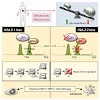
Histone variants are emerging as key regulatory molecules in cancer. We report a unique role for the H2A.Z isoform H2A.Z.2 as a driver of malignant melanoma. H2A.Z.2 is highly expressed in metastatic melanoma, correlates with decreased patient survival, and is required for cellular proliferation. Our integrated genomic analyses reveal that H2A.Z.2 controls the ...
24-May-2015
Nucl. Acids Res., online article
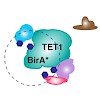
Any profound comprehension of gene function requires detailed information about the subcellular localization, molecular interactions and spatio-temporal dynamics of gene products. We developed a multifunctional integrase (MIN) tag for rapid and versatile genome engineering that serves not only as a genetic entry site for the Bxb1 integrase but also as a novel ...
21-May-2015
The EMBO Journal, online article
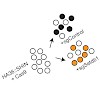
More than 50% of mammalian genomes consist of retrotransposon sequences. Silencing of retrotransposons by heterochromatin is essential to ensure genomic stability and transcriptional integrity. Here, we identified a short sequence element in intracisternal A particle (IAP) retrotransposons that is sufficient to trigger heterochromatin formation. We used this ...
21-May-2015
Molecular Cell, Volume 58, Issue 4, p621–631, DOI: http://dx.doi.org/10.1016/j.molcel.2015.04.024

Multicellular organisms depend on cell-type-specific division of labor for survival. Specific cell types have their unique developmental program and respond differently to environmental challenges, yet are orchestrated by the same genetic blueprint. A key challenge in biology is thus to understand how genes are expressed in the right place, at the right time, and ...
12-May-2015
Journal of Molecular Biology, online article

The pH-responsive one-component signaling system CadC in Escherichia coli belongs to the family of ToxR-like proteins, whose members share a conserved modular structure, with an N-terminal cytoplasmic winged helix–turn–helix DNA-binding domain being followed by a single transmembrane helix and a C-terminal periplasmic pH-sensing domain. In E. coli CadC, a ...
01-May-2015
Science, online article
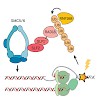
DNA interstrand cross-links (ICLs) block replication fork progression by inhibiting DNA strand separation. Repair of ICLs requires sequential incisions, translesion DNA synthesis, and homologous recombination, but the full set of factors involved in these transactions remains unknown. We devised a technique called chromatin mass spectrometry (CHROMASS) to study ...
28-Mar-2015
Experimental Cell Research, online article
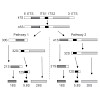
PeBoW, a trimeric complex consisting of pescadillo (Pes1), block of proliferation (Bop1), and the WD repeat protein 12 (WDR12), is essential for processing and maturation of mammalian 5.8S and 28S ribosomal RNAs. Applying a mass spectrometric analysis, we identified the DEAD-box helicase DDX27 as stably associated factor of the PeBoW-complex. DDX27 interacts with ...
23-Mar-2015
GENES & DEVELOPMENT, online article
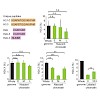
Epigenetic states defined by chromatin can be maintained through mitotic cell division. However, it remains unknown how histone-based information is transmitted. Here we combine nascent chromatin capture (NCC) and triple-SILAC (stable isotope labeling with amino acids in cell culture) labeling to track histone modifications and histone variants during DNA ...
09-Mar-2015
Journal of Bacteriology, online article
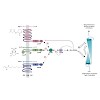
Quorum sensing (QS) is a communication process enabling a bacterial population to coordinate and synchronize specific behaviors. The bioluminescent marine bacterium Vibrio harveyi integrates three autoinducer (AI) signals into one quorum sensing cascade comprising a phosphorelay involving three hybrid sensor kinases, LuxU, LuxO, a Hfq/smallRNAs switch, and the ...
02-Mar-2015
The Journal of Immunology, online article
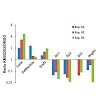
V(D)J recombination assembles Ag receptor genes during lymphocyte development. Enhancers at AR loci are known to control V(D)J recombination at associated alleles, in part by increasing chromatin accessibility of the locus, to allow the recombination machinery to gain access to its chromosomal substrates. However, whether there is a specific mechanism to induce ...
23-Feb-2015
PLOS Pathogens, online article

The microbiome and the phage meta-genome within the human gut are influenced by antibiotic treatments. Identifying a novel mechanism, here we demonstrate that bacteria use the universal communication molecule AI-2 to induce virulence genes and transfer them via phage release. High concentrations (i.e. 100 μM) of AI-2 promote dispersal of bacteria from already ...
16-Feb-2015
Nature Chemical Biology, online article
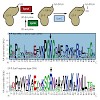
Ribosome stalling at polyproline stretches is common and fundamental. In bacteria, translation elongation factor P (EF-P) rescues such stalled ribosomes, but only when it is post-translationally activated. In Escherichia coli, activation of EF-P is achieved by (R)-β-lysinylation and hydroxylation of a conserved lysine. Here we have unveiled a markedly ...
21-Jan-2015
Scientific Reports, online article

Pluripotent cells can be subdivided into two distinct states, the naïve and the primed state, the latter being further advanced on the path of differentiation. There are substantial differences in the regulation of pluripotency between human and mouse, and in humans only stem cells that resemble the primed state in mouse are readily available. Reprogramming of ...
08-Jan-2015
Molecular Cell, online article

Regulation of histone acetylation is fundamental to the utilization of eukaryotic genomes in chromatin. Aberrant acetylation contributes to disease and can be clinically combated by inhibiting the responsible enzymes. Our knowledge of the histone acetylation system is patchy because we so far lacked the methodology to describe acetylation patterns and their ...
08-Jan-2015
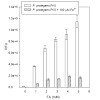
Fusaric acid is produced by pathogenic fungi of the genus Fusarium, and is toxic to plants and rhizobacteria. Many fluorescent pseudomonads can prevent wilt diseases caused by these fungi. This study was undertaken to evaluate the effect of fusaric acid on P. protegens Pf-5 and elucidate the mechanisms that enable the bacterium to survive in the presence of the ...
08-Jan-2015
The EMBO Journal, online article

Liver cancer represents the second most deadly human malignancy. The major histological subtype called hepatocellular carcinoma (HCC) arises by chronic inflammation-triggered regenerative responses of normally quiescent hepatocytes and progenitors, respectively. Such regenerative stress accelerates the accumulation of genetic and epigenetic changes (Yamashita & ...
07-Jan-2015
Journal of Biological Chemistry, 2015, doi: 10.1074/jbc.M114.605881, 290, 4801-4812. published on 07.01.2015
The Journal of Biological Chemistry, online article

TET proteins oxidize 5-methylcytosine to 5-hydroxymethylcytosine, 5-formylcytosine, and 5-carboxylcytosine and thus provide a possible means for active DNA demethylation in mammals. Although their catalytic mechanism is well characterized and the catalytic dioxygenase domain is highly conserved, the function of the regulatory regions (the N terminus and the ...
05-Jan-2015

Among patients newly infected with hepatitis C virus (HCV), only 20-30% clear the infection spontaneously. In the remaining 70% the infection persists, causing chronic liver inflammation and disease. It is well established that polymorphisms in host genes, especially in components of the innate immune response, contribute to the phenomenon of spontaneous HCV ...
05-Jan-2015
Eukaryotic Cell, online article

Translation is a fundamental and highly regulated cellular process. Previously, we reported that the kinase and transcription elongation factor Ctk1 increases fidelity during translation elongation in Saccharomyces cerevisiae. Here, we show that loss of Ctk1 function also affects the initiation step of translation. Translation active extracts from Ctk1-depleted ...










